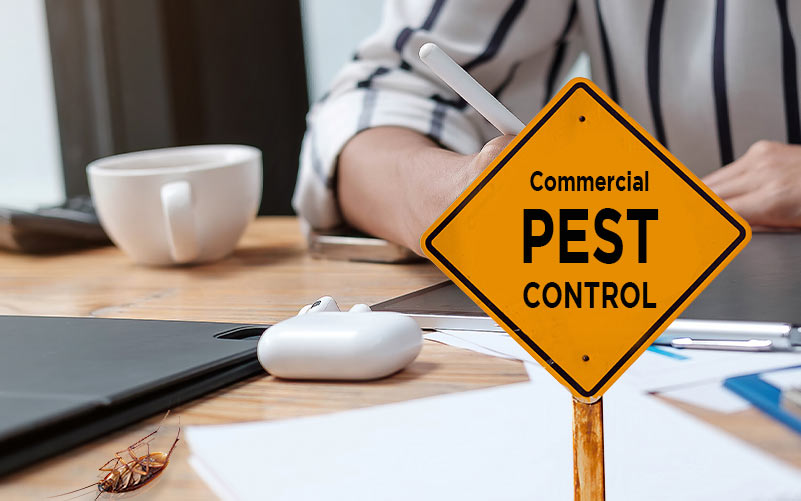A1 Bed Bug Exterminator Charlotte - Effective and Budget-friendly Services
A1 Bed Bug Exterminator Charlotte - Effective and Budget-friendly Services
Blog Article
Bed Pest Treatment Break Down: Contrasting Chemical Vs. Non-Chemical Solutions
In the world of parasite control, especially when handling the consistent problem of bed pests, the choice in between chemical and non-chemical treatment solutions can be a pivotal one. Both methods offer distinctive benefits and disadvantages, affecting elements such as efficiency, security factors to consider, and total expense. By examining the nuanced details of each approach, a more clear understanding of which path to go after in resolving a bed pest infestation can be achieved.
Effectiveness of Chemical Therapies
Chemical treatments for bed insect invasions have been commonly recognized for their potent and quick effectiveness in eliminating these parasites. When thinking about the efficiency of chemical treatments, it is critical to recognize that they can give a thorough and quick option to a bed bug trouble. Professional pest control men often depend on pesticides to target bed insects at various stages of their life cycle, including fairies, adults, and eggs. These chemicals typically function by interfering with the bed insects' nerve system, bring about paralysis and eventual fatality.
Additionally, chemical therapies have the advantage of using recurring impacts, meaning that they can remain to eliminate bed bugs even after the preliminary application. This recurring action is particularly useful in combating any kind of potential re-infestations. In addition, the rapid action of chemical treatments can bring alleviation to individuals dealing with extreme bed insect invasions, enabling them to gain back control of their living areas swiftly.
Security Problems With Chemical Solutions
One vital element that requires cautious consideration when using chemical solutions for bed pest therapy is ensuring the safety and security of occupants and the setting. Exposure to particular chemicals utilized in bed pest therapies can lead to breathing problems, skin irritation, or various other unfavorable responses, particularly in people with pre-existing conditions or level of sensitivities.
Furthermore, the ecological influence of chemical solutions is an additional significant consideration. Some chemicals utilized in bed insect treatments might be damaging to useful insects, wild animals, and communities if they leach into the dirt or water supply. It is vital to use chemical therapies sensibly, adhering to safety standards, and thinking about less hazardous alternatives to reduce these dangers and ensure the efficient and risk-free administration of bed insect invasions.
Advantages of Non-Chemical Strategies
Considering the possible security concerns and ecological influence associated with chemical services for bed pest treatment, discovering non-chemical strategies presents a promising choice with numerous distinct advantages. Non-chemical treatments are ecologically friendly, as they do not contribute to air or water contamination, making them a sustainable selection for pest control.
Furthermore, non-chemical options can be effective in targeting bed insects, including hard-to-reach areas where chemical treatments may not permeate - A1 bed bug exterminator charlotte. Approaches such as heat treatment, vacuuming, steam cleaning, and cushion encasements offer complete elimination without the use of harmful chemicals.
Limitations of Non-Chemical Treatments

Furthermore, non-chemical therapies usually need several applications to accomplish successful removal. This can be lengthy and might not always guarantee total elimination of all bed bugs and their eggs, particularly in hard-to-reach or surprise places.
Additionally, the success of non-chemical treatments heavily relies upon appropriate read here execution and thoroughness, which can be testing for people without professional proficiency. Poor application of non-chemical methods might lead to incomplete removal, leading to persistent infestations and the requirement for added treatments.
As a result, while non-chemical therapies have their advantages, it is vital to acknowledge these restrictions and consider them when establishing one of the most effective strategy for handling bed bug invasions.
Price Contrast: Chemical Vs. Non-Chemical Options
Given the limitations connected with non-chemical treatments, a necessary aspect to assess in the context of bed insect administration is the cost comparison in between chemical and non-chemical choices. Chemical therapies usually involve the application of insecticides by professionals, which can range from $250 to $900 per space, depending upon the severity of the infestation and the size of the location to be dealt with. In comparison, non-chemical treatments like warm treatment or steam can be extra expensive, with expenses ranging from $1,000 to $6,000 for an entire home. While the initial price of chemical treatments may seem lower, numerous therapies may be called for to fully eliminate the problem, potentially enhancing the general cost. On the other hand, non-chemical alternatives might provide a more environment-friendly and sustainable service, although they can be cost-prohibitive for some people. Eventually, when considering the cost of bed bug treatment choices, it is necessary to weigh the upfront expenditures versus the performance and lasting sustainability of the chosen method.
Verdict

Considering the potential safety and security worries and environmental impact associated with chemical options for bed pest treatment, discovering non-chemical techniques offers a promising alternative with a number of unique benefits.Given the constraints linked with non-chemical therapies, a necessary facet to assess in the context on call pest control of bed pest management is the price contrast in between chemical and non-chemical options. In comparison, non-chemical therapies like warmth treatment or steam can be more pricey, with prices varying from $1,000 to $6,000 for an entire home. While the first price of chemical therapies may seem lower, several treatments might be required to totally remove the infestation, possibly boosting the general price.In final thought, when contrasting chemical and non-chemical bed pest treatment options, it is necessary to take into consideration efficiency, safety, benefits, limitations, and expense.
Report this page